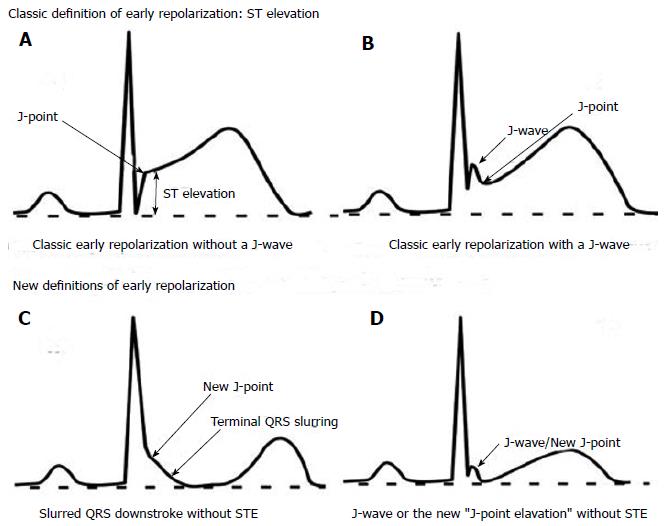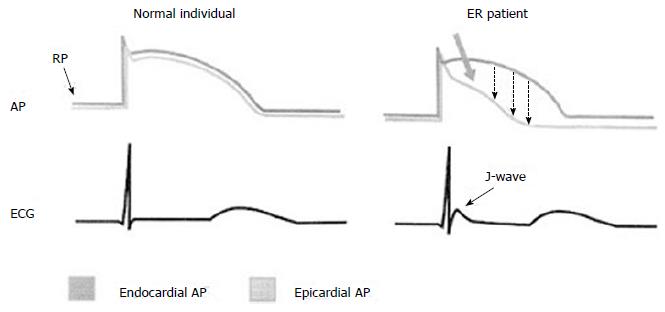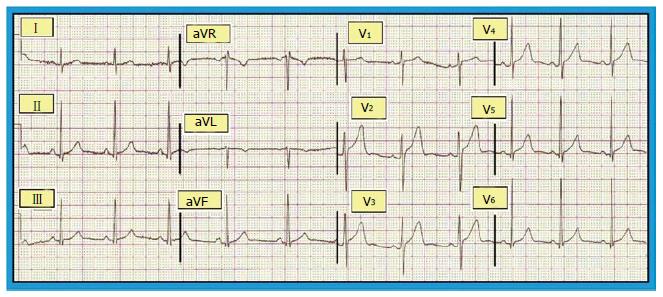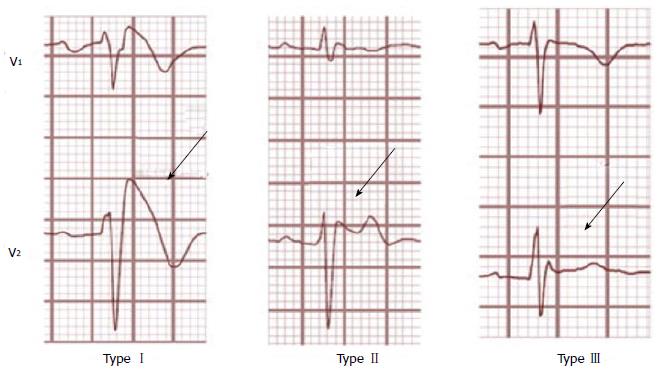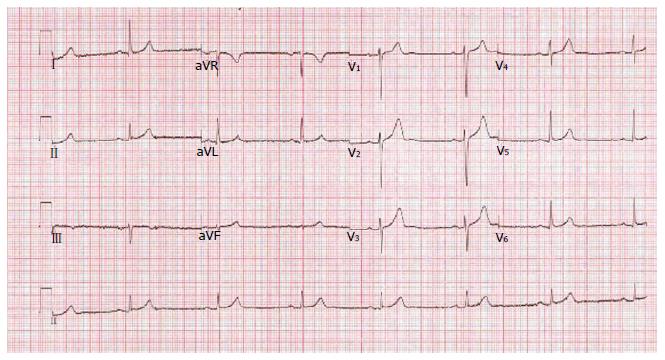Copyright
©The Author(s) 2015.
World J Cardiol. Aug 26, 2015; 7(8): 466-475
Published online Aug 26, 2015. doi: 10.4330/wjc.v7.i8.466
Published online Aug 26, 2015. doi: 10.4330/wjc.v7.i8.466
Figure 1 Examples of the classic and new definitions of early repolarization.
Examples of the original (classic) and emerging (new) definitions of early repolarization (ER). A and B show the classic form of STE-type ER, which is the form identified by ECG software algorithms. Notice the presence of a J wave in (B), followed by an ascending/upsloping ST segment. Both forms are considered benign; C and D show the malignant form of ER demonstrated as slurring at the end of QRS complex (C) or a discrete notch/J wave (D) followed by a horizontal/downslopping ST segment (no ST elevation). Reproduced from ref.[49], with permission from the publisher. STE: ST elevation type ER; ECG: Electrocardiographic.
Figure 2 Schematic representation of the possible mechanisms underlying J-wave occurrence.
Action potentials from epicardium and endocardium from normal individuals (left) and early repolarization (ER) patients (right) as well as the respective electrocardiograms are shown. A prominent phase I-notch and the loss of epicardial dome in phase - 2 (thick arrow) results in transmural dispersion of repolarization (dashed arrows) and appearance of the J-wave and ST-segment elevation on the surface ECG. AP: Action potential; ECG: Electrocardiogram; ER: Early repolarization; RP: Resting potention. Reproduced with permission, from ref.[67].
Figure 3 Benign early repolarization: Electrocardiogram showing ST segment elevation by at least 0.
1 mV from the baseline. Reproduced with permission, from ref.[68].
Figure 4 Malignant early repolarization: J-wave elevation (arrows) as slurring (lead II) and notching in the inferior and lateral leads and ascending ST segment in most leads.
Reproduced with permission, from ref.[69].
Figure 5 Brugada electrocardiogram-types.
Type-1 is characterized by a complete or incomplete right bundle-branch block pattern with a coved morphology ST-segment elevation of ≥ 2 mm in the right precordial leads (V1-V3) followed by a negative T-wave. In type-2, ST-segment elevation has a saddleback appearance with a high takeoff ST-segment elevation of > 2 mm, a trough displaying > 1-mm ST-elevation followed by a positive or biphasic T-wave. Type-3 has an ST-segment morphology that is either saddleback or coved with an ST-segment elevation of < 1 mm. Reproduced with permission, from ref.[69].
Figure 6 Malignant early repolarization: Horizontal ST-segment after early repolarization.
- Citation: Ali A, Butt N, Sheikh AS. Early repolarization syndrome: A cause of sudden cardiac death. World J Cardiol 2015; 7(8): 466-475
- URL: https://www.wjgnet.com/1949-8462/full/v7/i8/466.htm
- DOI: https://dx.doi.org/10.4330/wjc.v7.i8.466









